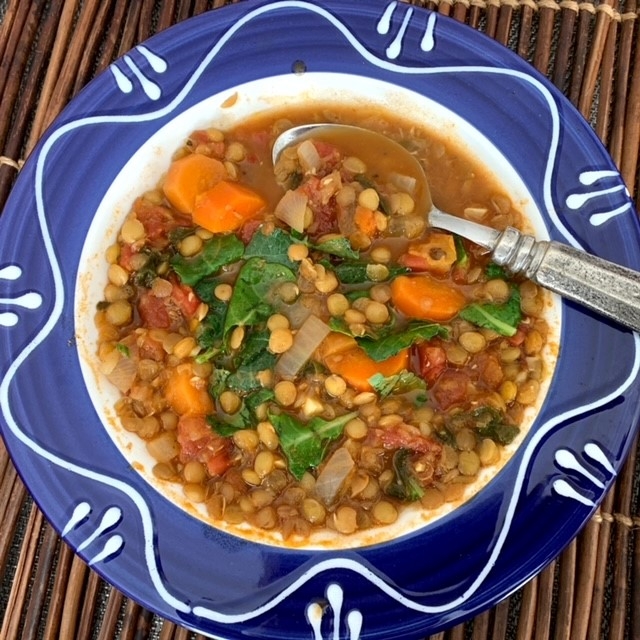By Kathleen Purvis, Novant Health Healthy Headlines
To find and book a physician click here.
Jennifer Anderson’s first rule of carbohydrates is simple: Carbohydrates aren’t your enemy. It’s about choosing the right ‘carbs.

Jennifer Anderson
“There is a lot of misconception,” Anderson says. “One of the things I hear all the time is ‘carbs are bad – don’t eat ’em.’”
As a registered dietitian with Novant Health Heart & Vascular Institute and the program coordinator at Novant Health Matthews Wellness Center, one of Anderson’s jobs is helping patients figure out the carbohydrate riddle. “Carbs bad” is too simple, she said.
High-protein diets that severely restrict carbohydrates, including the ketogenic diet, also called keto diet, the Atkins diet and the South Beach diet, are all popular, and you can lose weight on them, she says. But at what cost?
“My biggest question is, ‘What are you replacing those carbs with?” she said. If you’re upping butter and fatty meats like bacon, you may see lower numbers on your scale, (since fats can help you feel fuller), but you aren’t doing the best thing for your heart and arteries in the long run.
“Yeah, you could lose weight on the cabbage soup diet, but is it healthy? Is it sustainable? Can you stay on it long term?” she said.
Carbohydrates are often divided into two categories: “Simple carbohydrates” means refined carbohydrates – basically sugar. A lot of junk foods, including candies, sodas and pastries – are high in simple carbs and calories, and low in nutrients. Even things like potatoes and breads made with white flour can add a lot of carbohydrates to your plate, particularly for people trying to keep their blood sugar in check.
“Complex carbohydrates,” on the other hand, have more structure, and they also have more nutrients, including fiber that helps you feel full longer. Whole grain breads and pastas, for example, not only make you feel full, they also give you energy and more nutrients than their refined counterparts.
Other complex carbs to work into your diet include beans, whole grains (oatmeal, quinoa, brown and wild rice, barley) and vegetables (sweet potatoes, butternut squash, corn and peas).
Don’t forget about the non-starchy vegetables like leafy greens and dark green vegetables – these provide you with a lot of healthy antioxidants and phytonutrients and are lower in carbohydrates and calories.
So not all carbohydrates are created equally. A piece of fruit (preferably no larger than a tennis ball) has natural sugar, but it also has vitamins and fiber. Turn that fruit into juice, and you’ve removed the fiber while not lowering the sugar.
The most important thing Anderson tells clients about carbs: “Watch the portions. Most Americans eat too many carbohydrates. Reduce your carb intake, but don’t omit them.”
One way Anderson loves to do that: Using beans, which are high in protein but also include plenty of fiber. She adapted her recipe for lentil soup from the website cookieandkate.com, lowering the fat and reducing the sodium while using lemon juice to boost the flavor.
In March, watch for Jennifer Anderson’s 5 tips for cutting carbs the smart way.
Lentil soup
Ingredients
– 2 tablespoons extra virgin olive oil
– 1 medium yellow or white onion, peeled and chopped
– 2 carrots, peeled and chopped
– 4 cloves garlic, peeled and pressed or minced
– 2 teaspoons ground cumin
– 1 teaspoon curry powder
– 1/2 teaspoon dried thyme
– 1 (28-ounce) can low-sodium diced tomatoes, lightly drained
– 1 cup brown or green lentils, picked over and rinsed
– 4 cups low-sodium vegetable broth
– 2 cups water
– Pinch of red pepper flakes
– Freshly ground black pepper, to taste
– 1 cup chopped fresh collard greens or kale, tough ribs removed
– 1 to 2 tablespoons lemon juice, or to taste
Directions
Warm the olive oil in a large pot over medium heat. Add the onion and carrot and cook about 5 minutes.
Add the garlic, cumin, curry powder and thyme. Cook about 30 seconds or until fragrant, stirring constantly.
Add the diced tomatoes, lentils, broth and water. Add the red pepper flakes and black pepper. Bring to a boil, then partially cover the pot and reduce the heat to maintain a gentle simmer. Cook for 25 to 30 minutes, or until the lentils are tender, but still hold their shape. (Optional: For a creamier consistency, place 2 cups of the soup in a blender and puree until smooth, then stir back into the soup. Or use an immersion blender to puree a portion of the soup in the pot.)
Add the chopped greens and cook for 5 minutes longer, or until the greens have softened a little. Remove from heat and stir in the lemon juice.
The soup will keep in the refrigerator for about 4 days, or it can be frozen for several months.
Yield: 6 servings. Per serving: 155 calories, 5g total fat (1g saturated), 261mg sodium, 21g carbohydrates (8g fiber, 0g added sugar), 7g protein.
Novant Health
Healthy Headlines
Facebook
Instagram
Twitter
YouTube




